In the digital marketing world, understanding the path your customers take from viewing an advertisement to completing a purchase is critical. However, with the digital landscape continuously evolving, traditional tracking methods are becoming less effective. This is where Google Analytics Enhanced Conversion Tracking comes into play, offering a robust solution to the challenges faced by marketers today.
Enhanced Conversion Tracking leverages first-party data—information that users willingly provide during their interactions on your website, such as email addresses and phone numbers. This method marks a significant departure from reliance on third-party cookies, which are increasingly restricted due to privacy concerns. By focusing on data that visitors consent to share, Enhanced Conversion Tracking not only adheres to privacy regulations but also provides a more accurate and reliable measurement of user engagements and conversions.
Enhanced Conversion Tracking is a Google Analytics feature that provides more precise conversion data by leveraging first-party customer information
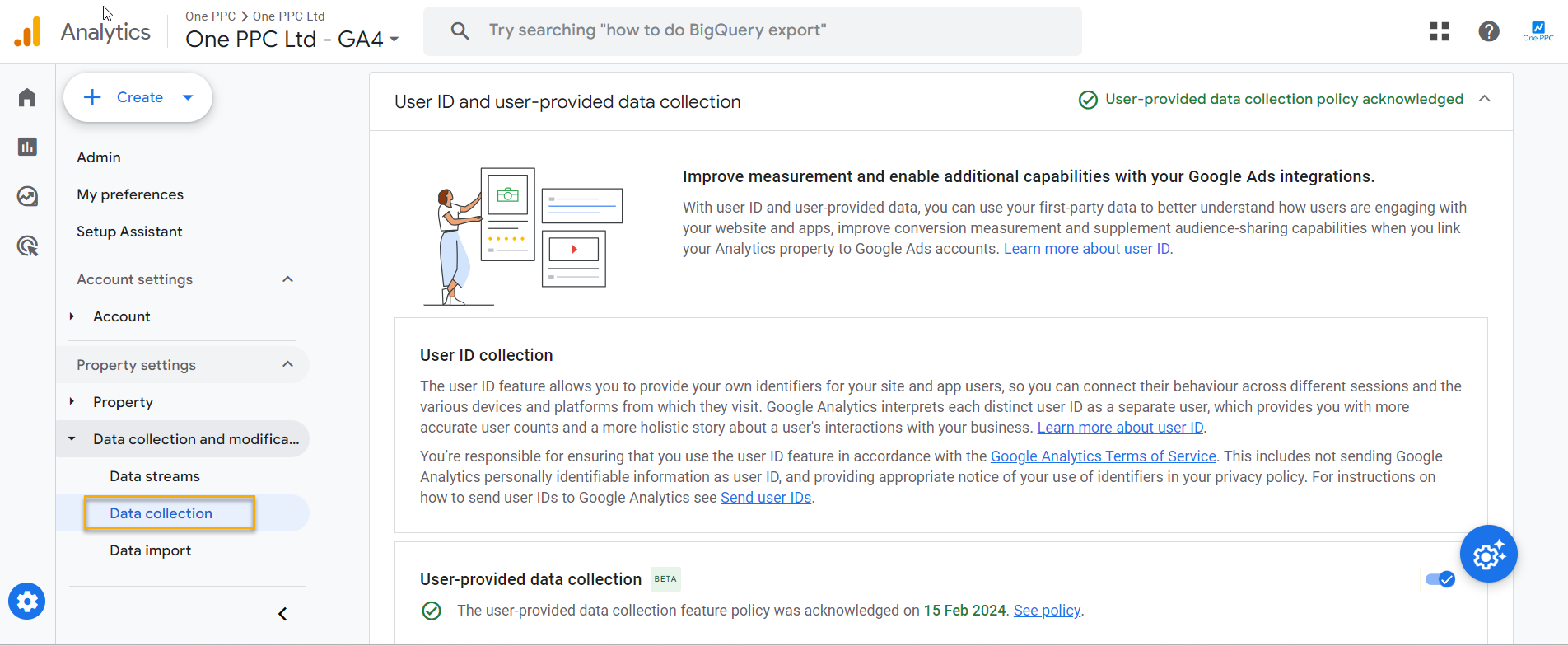
How Does It Work?
The process involves several key steps:
- Data Collection: When a user interacts with your website, such as filling out a form or making a purchase, first-party data like email addresses or phone numbers is collected
- Data Hashing: The collected data is hashed using the SHA-256 algorithm, transforming it into a secure string of characters
- Data Matching: The hashed data is sent to Google, where it’s matched against Google accounts.
- Conversion Reporting: Once a match is made, the conversion data is recorded in your Google Analytics account.
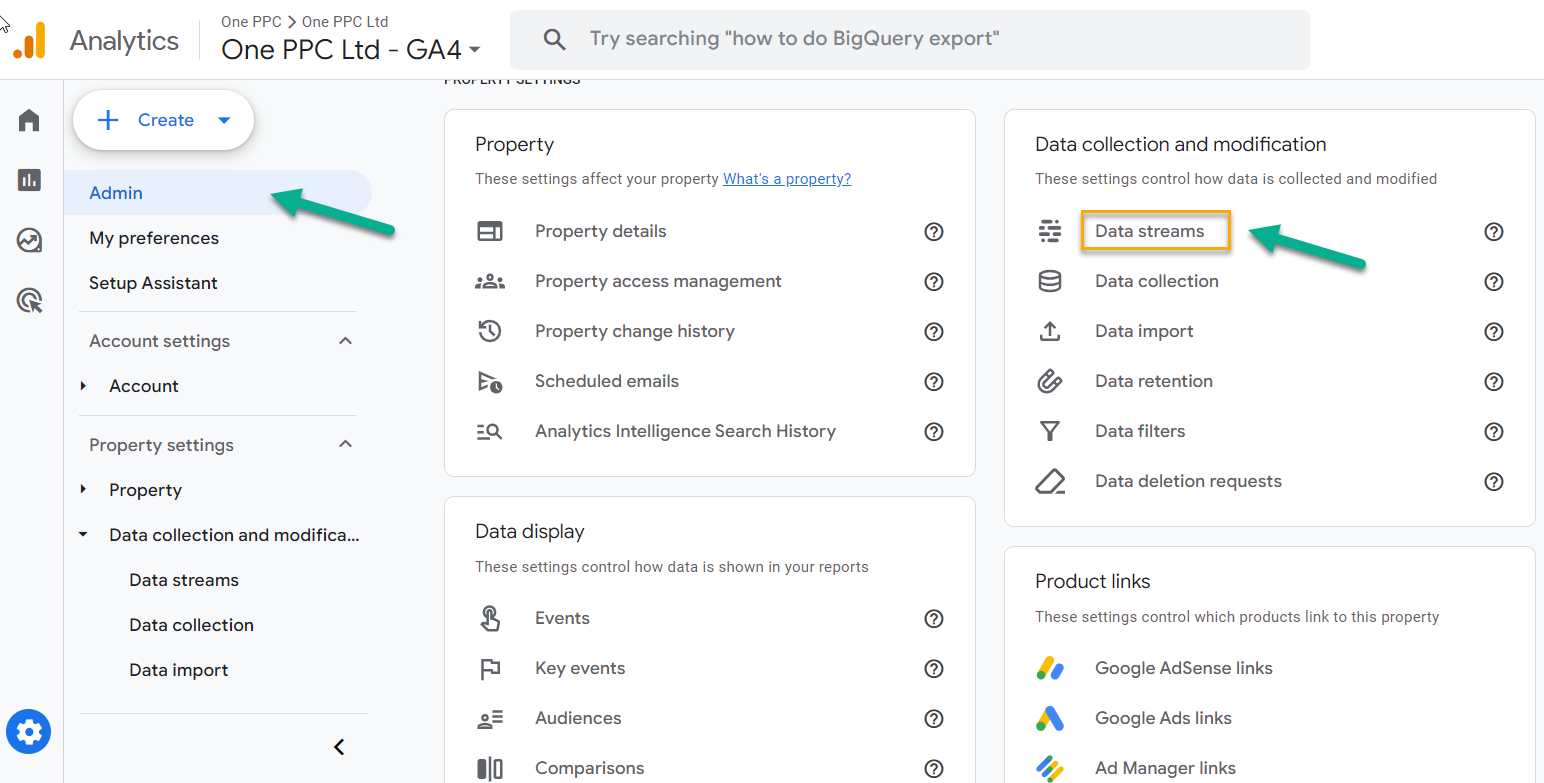
Setting Up Enhanced Conversion Tracking
To set up Enhanced Conversion Tracking in Google Analytics 4 (GA4), follow these steps:
- Enable User-Provided Data Collection:
- Go to your GA4 account and navigate to the Admin section
- Scroll down to ‘Data Collection Modification’ and select ‘Data Collection’
- Toggle on ‘User Provided Data Collection’
- Configure Data Stream:
- Go to your data stream settings
- Under ‘Google Tag’, click to expand
- Enable ‘Allow User Provider Data Capabilities’
- Toggle on ‘Automatically Detect User-Provided Data.
- Implement Tracking Code:
- Ensure the Google tag is installed on your website, either manually or through Google Tag Manager
- Test and Verify:
- After implementation, thoroughly test your setup to ensure data is being collected and reported accurately
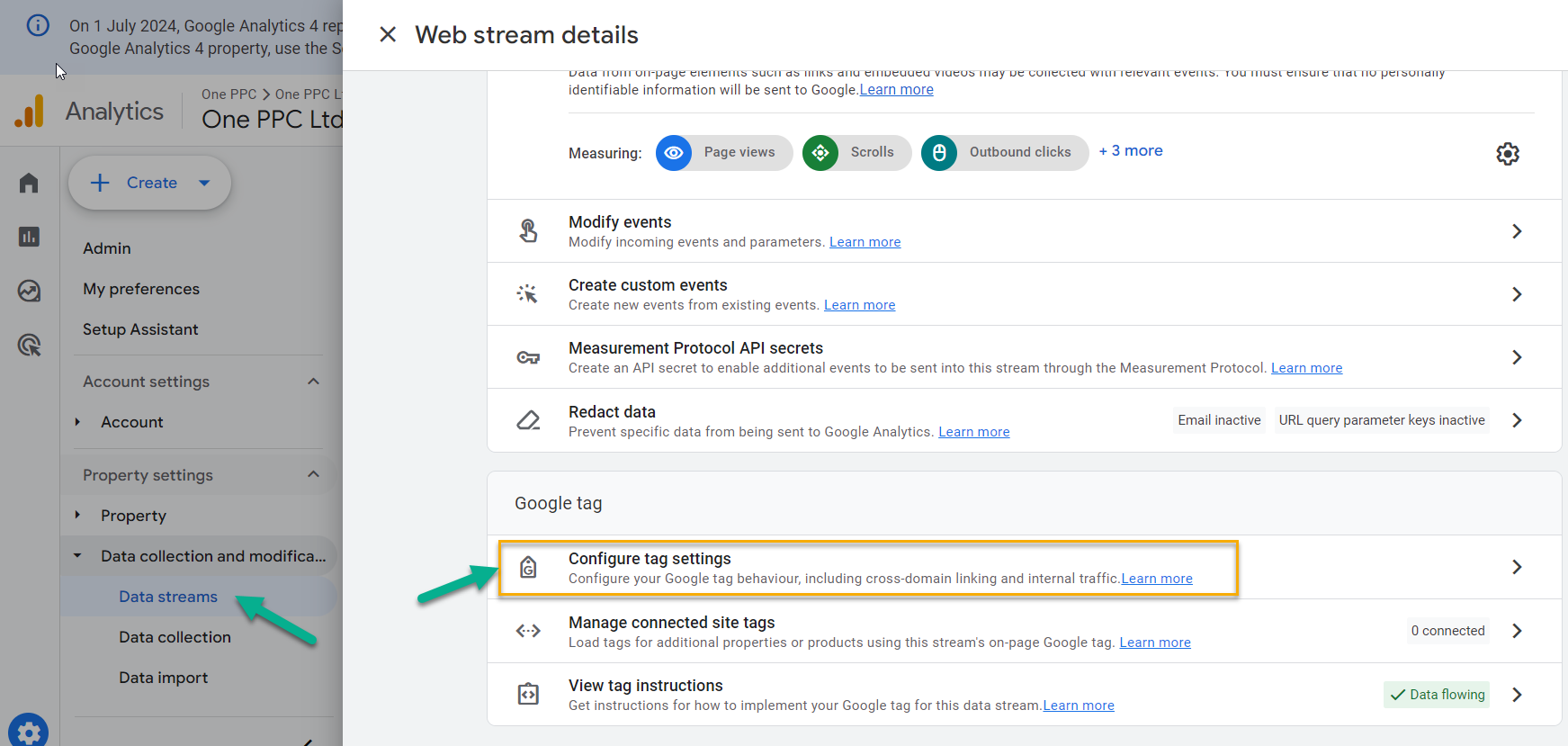
Benefits of Enhanced Conversion Tracking
Implementing Enhanced Conversion Tracking offers several advantages:
- Improved Accuracy: By using first-party data, you can attribute conversions more precisely to your marketing efforts
- Better Insights: Gain a more comprehensive understanding of your customer journey and which ads are driving results
- Optimised Campaigns: Use the enhanced data to refine your marketing strategies and improve ROI
- Future-Proofing: As third-party cookies become less reliable, Enhanced Conversion Tracking provides a more sustainable solution for accurate measurement.
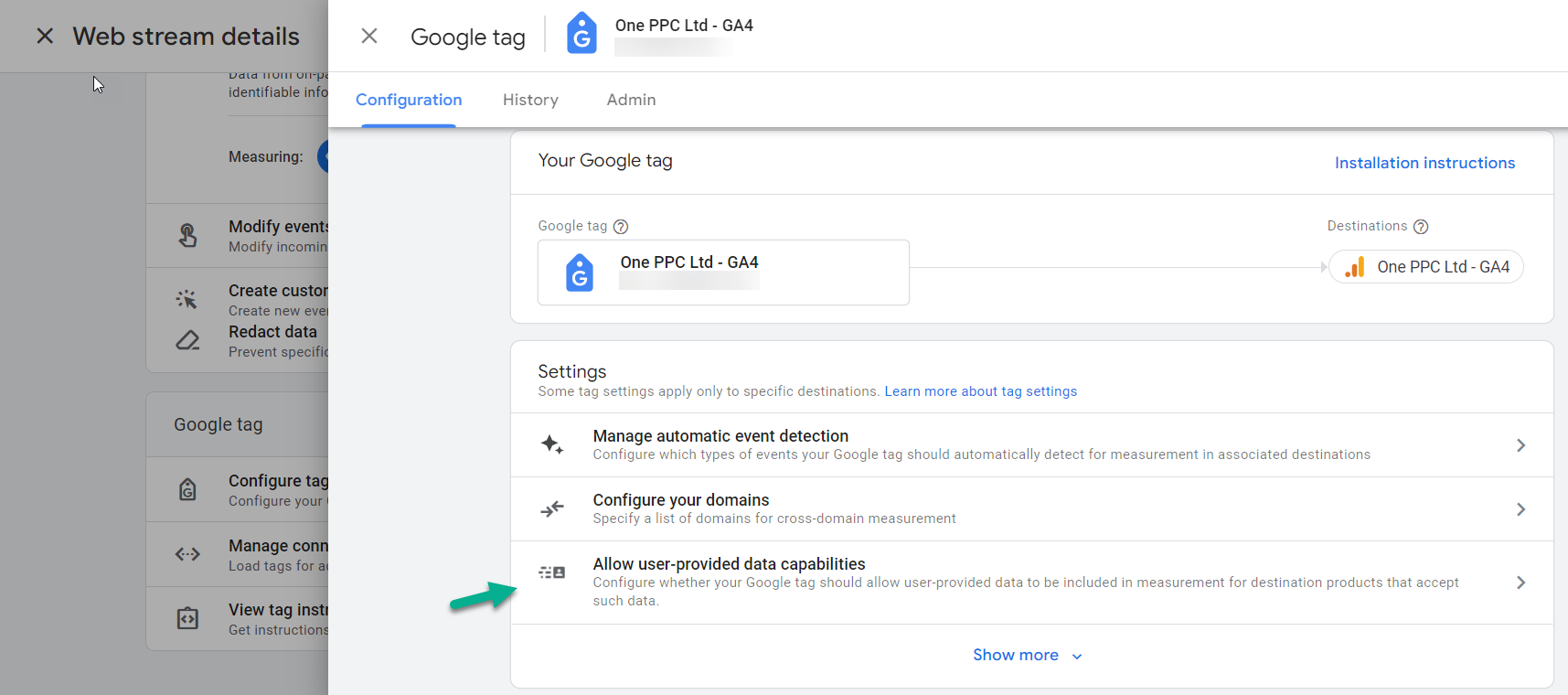
Data Privacy and Security
Enhanced Conversion Tracking in Google Ads is designed with data privacy and security as key priorities. Here’s how it addresses these concerns:
Data Hashing
The cornerstone of Enhanced Conversion Tracking’s privacy protection is data hashing:
- When a user provides information like an email address or phone number during conversion, this data is hashed using the SHA-256 algorithm before being sent to Google
- Hashing transforms the data into a secure string of characters, making it unreadable and protecting personally identifiable information (PII)
Compliance with Privacy Regulations
Enhanced Conversion Tracking is built to comply with major data protection regulations:
- It adheres to GDPR, CCPA, and other privacy laws
- Users retain control over their data-sharing preferences through their Google account settings
Secure Data Transmission
The process ensures that sensitive information is protected throughout:
- Hashed data is sent securely to Google Ads
- Only Google Ads can decrypt the hashed information, preventing interception by third parties
Limited Data Access
Enhanced Conversion Tracking restricts access to the collected data:
- The hashed information is only used for conversion matching and reporting within Google Ads
- Other conversion pixels or third-party tools do not have access to this data
Transparency and User Control
Google emphasises transparency in data collection:
- Advertisers are required to have a clear privacy policy on their website detailing data collection practices
- Users can manage their data-sharing preferences in their Google account settings
Addressing Web Development Concerns
To address concerns about PII being available in the data layer:
- Implement server-side tagging to process the data before it reaches the client-side
- Use Google Tag Manager’s built-in variable types for common PII fields, which automatically hash the data
- Consider using a Custom JavaScript variable in Google Tag Manager to hash the data before it’s sent to Google Ads
By implementing these measures, Enhanced Conversion Tracking provides a balance between improved conversion measurement and robust data privacy protection. It allows advertisers to gain more accurate insights while respecting user privacy and complying with data protection regulations.
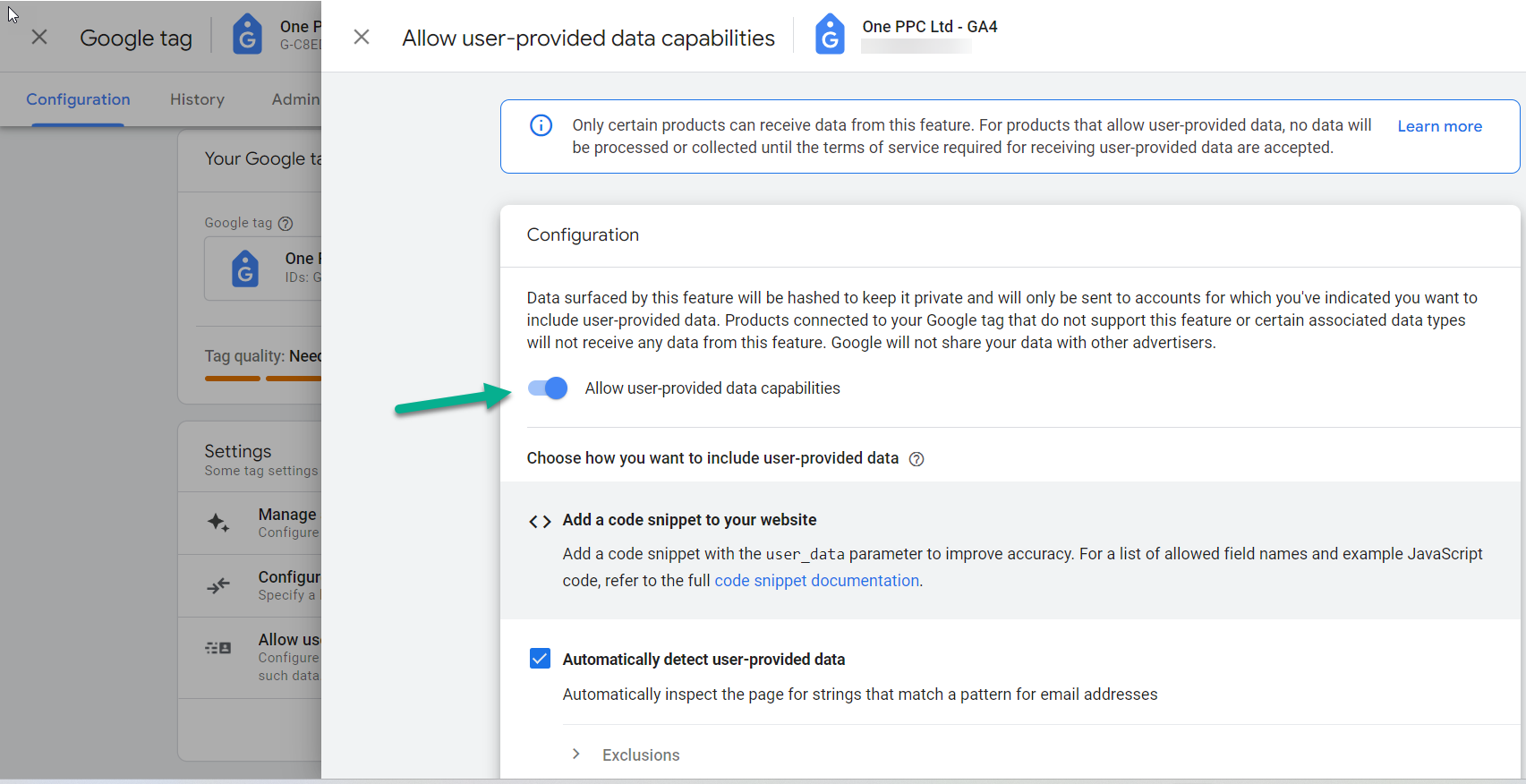
Considerations and Best Practices
When implementing Enhanced Conversion Tracking, keep these points in mind:
Data Privacy: Ensure you’re compliant with data protection regulations and have appropriate consent mechanisms in place
Regular Audits: Periodically review your setup to ensure it’s functioning correctly and providing accurate data
Combine with Other Tools: Use Enhanced Conversion Tracking in conjunction with other analytics features for a comprehensive view of your marketing performance.
By implementing Enhanced Conversion Tracking, you’ll be better equipped to measure the effectiveness of your marketing efforts and make data-driven decisions to improve your campaigns. Remember to regularly review and optimise your setup to ensure you’re getting the most accurate and valuable insights from this powerful tool.
Enhanced Conversion Tracking for Google Ads
Enhanced Conversion Tracking is not limited to Google Analytics; it is also a valuable feature available for Google Ads, enabling advertisers to harness the power of first-party data in their PPC (pay-per-click) campaigns. This integration enhances the ability to track and measure conversions from Google Ads, providing a more comprehensive understanding of how users interact with your ads and what actions they take after clicking.
Setting Up Enhanced Conversion Tracking in Google Ads:
Enable Enhanced Conversions in Google Ads:
- Navigate to the ‘Conversions’ section under the ‘Tools and Settings’ menu.
- Select the conversion action you want to enhance or set up a new one.
- In the conversion action settings, opt for ‘Enhanced conversions’ and follow the prompt to enable it.
Configure Conversion Source:
- Determine the source of the conversion data, such as a website or an app. For website conversions, you will need to modify your website’s conversion tracking tags as guided by Google Ads.
- Determine the source of the conversion data, such as a website or an app. For website conversions, you will need to modify your website’s conversion tracking tags as guided by Google Ads.
Add User Data to Conversion Tracking:
- Modify your website’s conversion tracking tags to include first-party data like email addresses or phone numbers. This information should be hashed before being sent to Google to ensure privacy and security.
To learn more, see our blog post guide: Google Ads Enhanced Conversion Tracking
Conclusion
In conclusion, Enhanced Conversion Tracking in Google Analytics represents a significant step forward in the realm of digital marketing. By utilising first-party data, this advanced feature not only ensures compliance with increasingly stringent privacy regulations but also provides marketers with more accurate and reliable insights into customer behaviours and conversion dynamics.
As we’ve explored in this guide, setting up Enhanced Conversion Tracking involves a clear understanding of data collection, hashing, and matching processes, alongside proper implementation and testing of your analytics setup. The benefits are clear: more precise tracking of conversions, improved campaign optimisation, and better insights into the effectiveness of your marketing efforts.
By integrating Enhanced Conversion Tracking into your analytics strategy, you’re not just adapting to the present landscape of digital marketing; you’re also preparing for the future. As third-party cookies become less reliable, the ability to leverage first-party data effectively will increasingly distinguish the most successful marketers from their competitors.
Therefore, I encourage you to take the steps outlined in this guide to implement Enhanced Conversion Tracking. Regularly review and optimise your setup to ensure that you continue to capture the most valuable and actionable insights. With this powerful tool, you are well-equipped to make data-driven decisions that can significantly enhance your marketing strategies and drive your business forward in an ever-evolving digital world.








